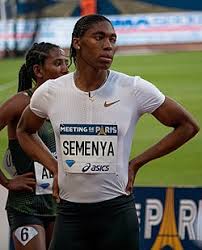Introduction
Caster Semenya, a renowned South African middle-distance runner and Olympic champion, has been at the center of a significant controversy in athletics regarding regulations on testosterone levels. This topic not only highlights the complexities surrounding gender and athletics but also raises questions about fairness, equality, and the rights of female athletes globally. Understanding Semenya’s journey and the current events surrounding her legal battles is crucial for recognizing the implications on sports and human rights.
The Background of the Controversy
Since her victory at the 2009 World Championships, where she won gold in the 800 meters, Semenya has faced scrutiny over her natural levels of testosterone. In 2019, the International Association of Athletics Federations (IAAF) implemented new rules that required female athletes with high testosterone levels to lower them through medical means to compete in certain categories. Semenya, having naturally high testosterone levels, has found herself compelled to challenge these regulations.
Current Legal Developments
After numerous unsuccessful appeals to overturn these regulations, including a notable decision by the Court of Arbitration for Sport in 2019, Semenya’s legal team has recently presented her case to the European Court of Human Rights in 2023. The court’s involvement is significant as it could potentially rewrite the legal landscape of athletics concerning gender identity and hormone levels. Semenya remains determined to fight against what she deems discriminatory practices that violate her rights as a woman.
Implications for Athletes and Sports
The outcome of Semenya’s case is expected to have profound effects on female athletes worldwide. If the court sides with her, it may set a precedent that influences how sporting bodies regulate gender and hormone levels in the future. Furthermore, this case raises essential discussions about fairness, the intersection of science and sports, and the treatment of athletes who do not fit traditional gender binaries.
Conclusion
Caster Semenya’s ongoing battle is not merely a personal struggle; it represents broader issues regarding gender and equality in sports. As she seeks to ensure the right to compete without undergoing unnecessary medical interventions, the sports community watches closely. The European Court of Human Rights’ decision will likely resonate far beyond athletics and influence future policies across various sports disciplines. With support growing for her cause, one can only hope for a resolution that respects human rights and embraces diversity in athletic competition.

